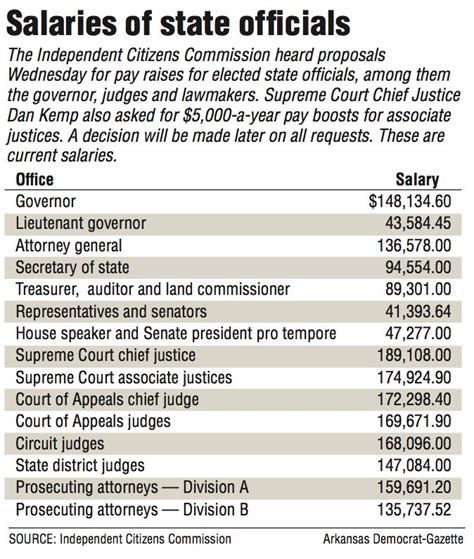Serving as a Justice on the Supreme Court of the United States is arguably the most prestigious position in the American legal field. It is a role of immense power, public service, and historical significance. While the position is a lifetime appointment focused on legacy over earnings, the compensation is substantial and set at the highest levels of the federal government.
For 2024, the salary for an Associate Justice of the Supreme Court is $298,500, while the Chief Justice earns $312,200. This article will explore the details behind these figures, the factors that govern judicial pay, and the unique career path to the nation's highest court.
What Does a U.S. Supreme Court Justice Do?


A U.S. Supreme Court Justice is one of nine judges who serve as the final arbiters of law in the United States. Their primary responsibility is to interpret the U.S. Constitution and federal laws. The role is complex and multifaceted, involving:
- Hearing Oral Arguments: Listening to lawyers present their cases on significant legal issues.
- Deciding Cases: Meeting in private conferences to deliberate and vote on the outcome of cases.
- Writing Opinions: Authoring the court's official decision (majority opinion), as well as separate concurring or dissenting opinions to articulate different legal reasonings.
- Selecting Cases: Reviewing thousands of petitions (known as "writs of certiorari") each year and selecting a small fraction—typically fewer than 100—to be heard by the full court.
Their decisions create binding precedents that shape public policy, civil rights, and the balance of power between the branches of government, impacting the lives of all Americans for generations.
Average U.S. Supreme Court Justice Salary


Unlike most professions, there isn't a salary "range" for a Supreme Court Justice based on performance or seniority on the bench. The salaries are fixed amounts set by Congress.
According to the official United States Courts website, the judicial salaries for 2024 are:
- Chief Justice of the United States: $312,200 per year.
- Associate Justices of the Supreme Court: $298,500 per year.
These figures represent the top tier of the federal judicial pay scale. For context, Circuit Judges (in the U.S. Courts of Appeals) earn $258,200, and District Judges (in U.S. District Courts) earn $244,400 in 2024.
*Source:* *United States Courts, "Judicial Compensation," (January 1, 2024).*
Key Factors That Influence Salary


The salary structure for a Supreme Court Justice is fundamentally different from that of a private-sector employee or even other government officials. Standard factors like experience or specialization do not determine pay increases. Instead, compensation is governed by a unique set of rules.
###
Level of Education
A law degree (Juris Doctor, or J.D.) is a de facto requirement for becoming a judge at this level. All current justices hold a J.D., many from the nation's most elite law schools. However, education is a prerequisite for nomination, not a driver of salary. A justice with an advanced law degree (LL.M.) or a Ph.D. does not earn more than a justice with a J.D. Once on the court, educational background has no impact on compensation.
###
Years of Experience
To even be considered for a Supreme Court nomination, a candidate must possess decades of distinguished legal experience as a judge, academic, or top-tier attorney. However, once appointed, years of experience on the Supreme Court bench do not lead to a higher salary. A newly appointed justice earns the exact same amount as a justice who has served for 20 years. The only salary distinction is between the Chief Justice and the eight Associate Justices.
###
Geographic Location
This factor is not applicable. All Supreme Court Justices work in Washington, D.C., where the Supreme Court is located. Their salary is a single, national figure, unaffected by regional cost-of-living differences.
###
Company Type
The "company" is the judicial branch of the U.S. Federal Government. As there is only one employer, this factor is irrelevant. The salary is not determined by an internal "company" policy but by an external body—the U.S. Congress.
###
The Real Determinant: Congressional Legislation and COLAs
The primary factor determining a Supreme Court Justice's salary is legislation enacted by the U.S. Congress. The framework for this is established in the Ethics Reform Act of 1989, which provides for an annual cost-of-living-adjustment (COLA) for federal judges.
This means that salaries for justices (and all federal judges) are scheduled to increase annually based on the Employment Cost Index. However, Congress retains the power to vote to deny these adjustments, and has done so in several years, which has led to periods of wage stagnation. Therefore, the progression of a justice's salary over time is directly tied to congressional action and national economic indicators.
Job Outlook


The job outlook for a U.S. Supreme Court Justice is unlike any other profession.
- Number of Positions: The number of positions is fixed at nine and has not changed since 1869.
- Growth Rate: The job growth rate is 0%.
- Turnover: Justices hold lifetime appointments. Openings only occur when a justice retires, resigns, or passes away. These events are infrequent and unpredictable.
While there is no "growth" in the number of Supreme Court seats, the broader field for Judges and Hearing Officers is projected to grow. The U.S. Bureau of Labor Statistics (BLS) projects a 3% growth for "Judges, Magistrates, and Other Judicial Workers" from 2022 to 2032, which is about as fast as the average for all occupations. This reflects a continued need for judges in federal, state, and local courts. However, aspiring to the Supreme Court means aiming for one of the nine most exclusive legal positions in the world.
*Source:* *U.S. Bureau of Labor Statistics, Occupational Outlook Handbook, "Judges and Hearing Officers" (Data retrieved for 2022-2032 projections).*
Conclusion


For those considering a career in law with the ultimate aspiration of reaching the Supreme Court, the journey is one of intellectual rigor, impeccable ethics, and profound public service. The salary, while significant, is not the primary motivation for seeking such a role.
Key Takeaways:
- Set Salaries: The Chief Justice earns $312,200 and Associate Justices earn $298,500 as of 2024.
- No Performance Pay: Salaries are fixed and do not vary based on experience, seniority on the bench, or educational credentials.
- Congressional Control: Pay is determined by Congress and is subject to an annual COLA, which can be blocked by legislation.
- A Career of Service: The position is a lifetime appointment focused on shaping American law and society, with a legacy that far outlasts any monetary compensation.
Ultimately, the path to the Supreme Court is a testament to an individual's extraordinary legal mind and commitment to the principles of justice.
